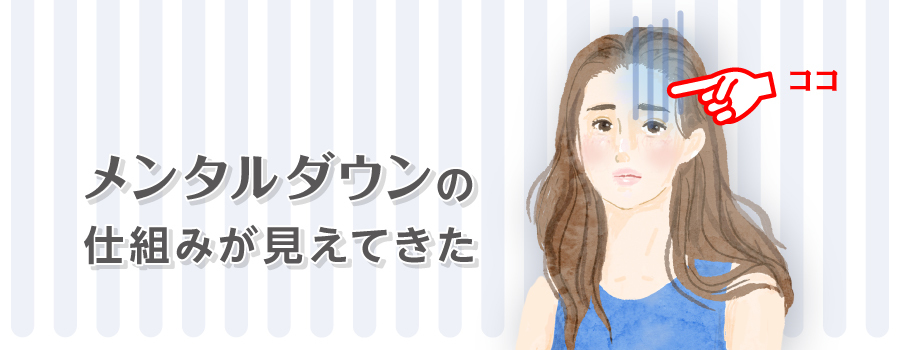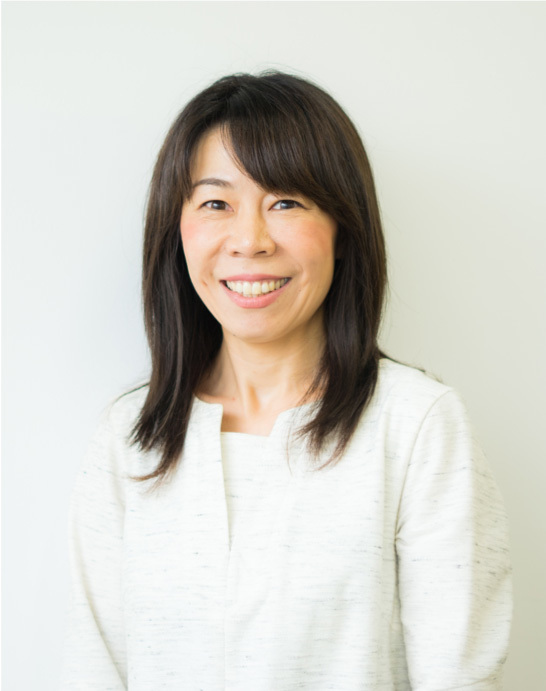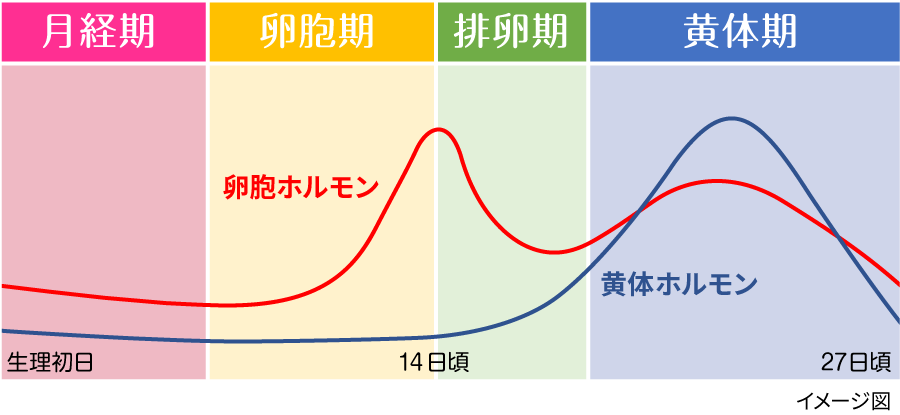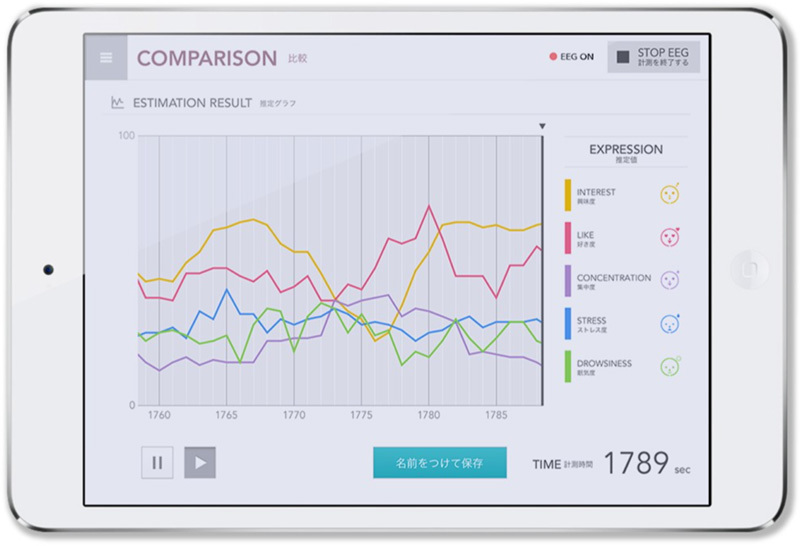Note: This website was automatically translated, so some terms or nuances may not be completely accurate.
The mechanism behind mental breakdowns is becoming clearer.

Mitsukura Yasue
Keio University

A webinar titled "Considering 'Emotional Control' Needed Precisely Because of COVID-19: From Hormonal Fluctuations and Brain Waves" was held on April 19, 2021. The lecturer was Professor Yasue Mitsukura of Keio University, a leading researcher in visualizing sensibility through brainwaves. Professor Mitsukura, who has been involved in biosignal research for nearly 20 years, has also drawn attention for the "Sensibility Analyzer," a real-time sensibility measurement tool utilizing brainwave technology, jointly developed with Dentsu ScienceJam Inc.
What exactly is the relationship between hormonal fluctuations, which significantly influence human emotions, and brainwaves? And what potential does this measurement method hold for human society and its future? Amidst the various restrictions during the COVID-19 pandemic, which place heavy emotional burdens on people, Professor Mitsukura's lecture on the theme of "Medical-Engineering Collaboration" is essential viewing.

The Mitsukura Laboratory focuses on medical-engineering collaboration. It conducts research that cannot be achieved by engineering alone or medicine alone. Research spans a wide range of fields, including bio-signal analysis (starting with EEG), real-time emotion recognition via EEG, neuroscience, elucidating the mechanisms of dementia onset, genetic analysis, genome editing, sleep analysis, speech recognition, and image processing. Applications are anticipated not only in medicine but also in product development, corporate branding, and various other areas.
By "quantifying" "qualitative" phenomena, the essence of things becomes visible
At the start of the webinar, Professor Mitsukura presented the figure "37%." He asked, "What do you think this number represents?" The answer is the percentage of Japanese people getting high-quality sleep. Whether someone is sleeping well is often treated as a "qualitative" matter. But when presented with the specific number "37%" (quantitative data), doesn't it make you pause?
For example, if we could "quantify" things like stress or excitement, it would become a powerful guide for navigating our daily lives. Instead of thinking, "I'm not really feeling it today, but I guess I'll just push through," we could pinpoint the nature of that "feeling" with concrete numbers.
What exactly is stress? Professor Mitsukura's lecture began here. "Simply put, it's something that disrupts the functioning of the autonomic nervous system." That much is understandable. But when it gets to, "The human brain judges things it dislikes in the hypothalamus, stimulating the sympathetic nervous system. This state of excitement travels through the spinal cord to the adrenal glands. The adrenal glands then produce adrenaline and cortisol, which become the energy to fight stress. These enter the bloodstream and are delivered throughout the body..." well, that's where the layperson gives up.
Here, Professor Mitsukura extended a helping hand to the confused student. "Essentially, when humans feel intense stress, the body tries to maintain its equilibrium." When you need to calm down, you take a deep breath. To avoid getting nervous in front of people, you might write the character for "person" on your palm and swallow it. If there's any "scientific basis" for these things, I'd love to hear it. Not as a "qualitative" observation, but strictly as a "quantitative" analysis.
When "hormones" change, "feelings" change
"I think the topic that resonates most strongly is women's menstrual cycles," said Professor Mitsukura. Men can vaguely understand that women get irritable during their menstrual cycle. But I don't recall ever seeing data that "quantitatively" demonstrates this. That's why it gets dismissed as "just female hysteria" or "that's why female bosses are hard to deal with." It's a major factor in the complexity of so-called gender issues. "That's not right. Scientifically, it's a clear fact. I really want people to understand that."

Women's menstrual cycles generally follow a roughly 27-day pattern, repeating the phases of "menstruation," "follicular phase," "ovulation," and "luteal phase." Men can generally grasp this much. "But you've probably never encountered quantitative data showing that concentration levels fluctuate by as much as 8% between the 'follicular phase'—when mood tends to be brighter and more positive—and the 'luteal phase'—when irritability builds, right?"
According to Professor Mitsukura, this isn't just a mere 8%. "In a company, if sales dropped 8% year-on-year, it would be serious enough to get executives fired, right? That's the kind of impact happening in a woman's body every 27 days."
Why does this happen? It's closely tied to the theme of this webinar: "hormones." And these "hormones" are also significantly involved in shaping the elusive concept of "human emotions," not just for women.
Challenges humanity must overcome—like menopause, depression, and Alzheimer's—are still numerous.
Starting with the topic of women's menstruation, Professor Mitsukura's discussion broadens significantly. "The notion that modern medicine is omnipotent is a delusion. There are countless conditions like 'menopausal disorders,' 'depression,' and 'Alzheimer's' where the causes and perfect treatments remain unestablished. Pursuing these questions ultimately leads us to the fundamental question: How do human emotions arise in the first place?"
Emotions have long been considered beyond scientific study. Unlike benign tumors, they cannot be safely removed through surgical intervention. Yet, brainwaves undoubtedly emit some kind of signal. If we could analyze these signals, might we overcome diseases humanity has yet to understand? This is the very heart of Professor Mitsukura's research.
The "Sensitivity Analyzer" developed in Professor Mitsukura's lab, he explained, is an attempt to generate quantitative data on interest, liking, concentration, stress, and calmness.

"Of course, we haven't reached the point where we can declare this complete. But consider this: haven't you seen someone who usually keeps their heart closed suddenly flash the most incredible smile? If we could understand the essence of that incredible smile, I believe we could see concrete ways to live a better life. This isn't about symptomatic treatment or spiritual cultivation. Human emotions are deeply influenced by hormones. By gaining deeper knowledge and analyzing these hormones, we can enrich life, society, and even business itself."

In a sense, "medical-engineering collaboration" is a challenge to "literature" and "art."
What truly moves people's hearts isn't numbers or anything like that, but things like "literature," "art," or "sports." Yet, I don't think there has ever been a "quantitative" analysis of why people are moved by such things, why they find healing in them.
"For example, an elderly woman can look astonishingly youthful simply by putting on makeup. Qualitative analysis can suggest this to some extent, and without getting into complicated hormone theories, it's just... well, that's how it is. But that's precisely the point."
To explain Professor Mitsukura's point simply: What exactly is that "well, that's just how it is"? What is "that"? What is the true nature of "that kind of thing"? Indeed, there hasn't been much "quantitative" analysis of what specific values increase by how much when an elderly person applies makeup. "No matter how old you are, you're still a woman. If they put on makeup, well, that's bound to lift their spirits, right?" What exactly is that "right"?
Take menopause, for example. If we could pin down that feeling many women describe as "being pushed off a cliff" or, in men's terms, "rolling down a hill" with concrete data, we might find ways to overcome that discomfort. The same goes for harassment-related issues. For instance, 'emotional pain' (mental breakdown) has traditionally been treated as something 'literary'. While 'legal' judgments have recently entered the picture, the fundamental problem remains unresolved. Why do people get excited in the first place? Why do they feel emotional pain? I believe the key lies in analyzing 'hormones'.
That urge to gaze at the sea after a broken heart. That desire to make a wish upon a star when the pain is so intense it makes you tremble. If cutting-edge science could offer relief for these feelings, nothing could be more reassuring.
For more on the "Emotion Analyzer," see here:
The Dentsu ScienceJam Inc. website is here.
Was this article helpful?
Newsletter registration is here
We select and publish important news every day
For inquiries about this article
Author

Mitsukura Yasue
Keio University
Department of Systems Design Engineering, Faculty of Science and Engineering
Since 1999, he has served as an assistant professor in the Department of Intelligent Information Engineering at Tokushima University's Faculty of Engineering, a full-time lecturer at Okayama University, and an associate professor at Tokyo University of Agriculture and Technology. He is currently an associate professor in the Department of System Design Engineering at Keio University's Faculty of Science and Technology. Since August 2013, he has concurrently served as Chief Technology Officer at Dentsu ScienceJam Inc.